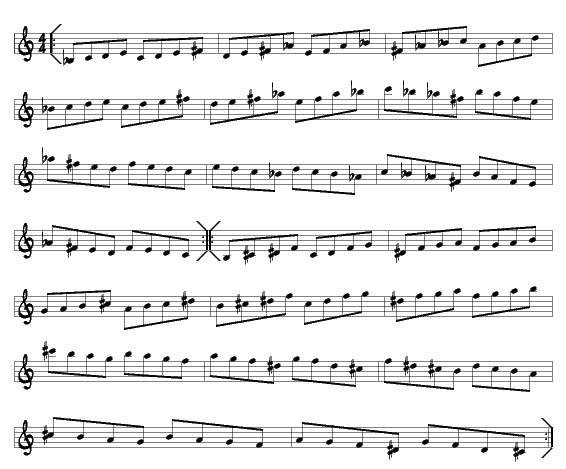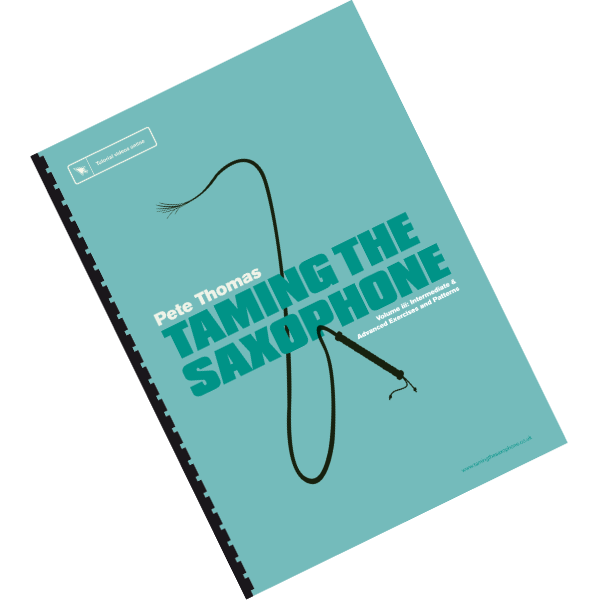Like diminished scales, whole tone scales fit very well over a dominant 7 chord, especially if the chord has an augmented 5th or b13th, though they usually work well even when the chord has a perfect 5th. There are only two whole tone scales with different notes in as each step of the scale is a whole tone: you can see in the example below that if you started the scale on C it would have the same notes as the Bb scale. When writing the scale the choice of enharmonics can be arbitrary, but you should try to get the correct enharmonic spelling for the chord in question. If the first scale below is to be used with Bb7, then it is correct that the sixth degree should be Ab, not G#. In the second scale (B), it is correct that the third degree is D# not Eb.
The fourth degree can be a b5th or #11th, the fifth degree can be an augmented 5th or b13th, depending on the context.
In improvisation this scale can work over a straight dominant 7th, the chord does not necessarily need the +5th or b13th.
Ex 8.01
Basic Scales:

Ex 8.02
This is basically a whole tone version of Ex 1-02

Ex 8.03
This is basically a whole tone version of Ex 1-01

Ex 8.04
This exercise uses augmented triads ascending then descending in whole tone steps. This works very well in improvisation over any dominant or augmented dominant chord

